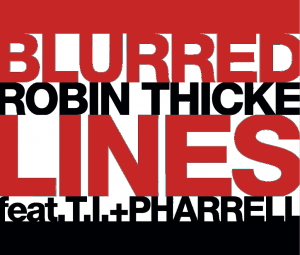Misspelling of “White Sangriiia” Denied Trademark Registration at TTAB
Takeaway: Purposefully misspelling the name of a product is likely not enough of a change to take a trademark application out of the realm of being considered merely descriptive.

The TTAB recently decided a case regarding the trademark application of Pan American Properties, an alcoholic beverage distributor. The trademark it applied for was “White Sangriiia.” Pan American was not contending that it would preclude anyone from using the terms “white” or “sangria” individually, but rather believed that “White Sangriiia” was fanciful and distinctive because of the combination and misspelling of sangria. The original examiner of the trademark application denied the application because they believed that the term was merely descriptive. The TTAB took up the appeal of the registration denial and determined that the original examiner was correct on the same grounds.
The TTAB determined that the term “sangriiia” would be indicative to consumers of the alcoholic beverage they are purchasing, i.e. “sangria.” They further determined that the misspelling was only a slight difference from the real word for its product. The difference between its previous mark “Gasolina sangriiia” and “White Sangriiia” was that Gasolina Sangriiia did not distinctly describe something that you would readily drink, unless you are associating the drink with Pan American, whereas white sangria is something that people drink all the time. The TTAB determined that “white” described an ingredient of their product and “sangriiia” was an intentional misspelling of the word “sangria” that describes an alcoholic beverage that Pan American sells. It may have been different if they sold an unrelated product, but the name matches the product in this situation so it was determined to be merely descriptive.
The Ninth Circuit Decides the ‘Blurred Lines’ Copyright Case on Procedural Grounds
Takeaway: If the district court denies your motion for summary judgment, ask it to allow you to appeal the decision right away If the case goes to trial, move for a judgment as a matter of law immediately after the plaintiff has presented its case in chief and then renew the motion at the end of the trial.
 Last week, after years of litigation, the Ninth Circuit affirmed the jury’s verdict that Pharrell Williams and Robin Thicke’s 2013 hit, “Blurred Lines,” infringed the copyrights owned by Marvin Gaye from his iconic 1977 hit, “Got to Give It Up.”
Last week, after years of litigation, the Ninth Circuit affirmed the jury’s verdict that Pharrell Williams and Robin Thicke’s 2013 hit, “Blurred Lines,” infringed the copyrights owned by Marvin Gaye from his iconic 1977 hit, “Got to Give It Up.”
But, the Ninth Circuit affirmed largely on procedural grounds because the Thicke defendants had failed to move for a judgment as a matter of law after the Gaye plaintiffs’ case in chief. As a result, they were not permitted to argue that judgment was wrong under the more liberal sufficiency of the evidence standard. The appeal was gravely limited to arguing only that certain jury instructions and expert testimony warranted a new trial, which entails a more deferential standard of review. Judge Jacqueline Nguyen dissented because she believed the majority was wrong not to review the substance of the issues by comparing the songs.
Equally important, the Ninth Circuit held that a 2011 Supreme Court decision bars appellate courts from reviewing a denial of summary judgment at the end of a case, after a jury verdict.
The decision upheld the $5.3 Million jury award for the Gaye plaintiffs, but offers very little by way of clarifying copyright law.
H&M Files Suit Against Street Artist for Graffiti Used in Advertising
Takeaway: It is always a good idea to seek permission before using the work of another artist in your advertising, even in the case of “street art.”
H&M was in a dispute with a street artist over some graffiti they used in one of their advertising campaigns. H&M filed suit against the street artist in question alleging that the artist had no copyrights because his art was the result of criminal activity resulting in trespass and vandalism. Eventually H&M dropped the suit against the artist due to public backlash of their complaint.
This case is important because litigation surrounding infringement of graffiti is not a new issue and it could cause your business problems if you use graffiti in your advertising. There are drastically differing opinions when it comes to “graffiti” or “street art.” Some people consider it to be a criminal activity and think it should be stopped. On the other hand, a growing number of younger generations find it to be artistic expression that should be protected.
Whatever side you are on in the debate, it will be important to consider the business ramifications of using graffiti in your advertising and you should probably seek permission before doing so. Otherwise you could either end up in a lawsuit, or sometimes even worse, offend the people in support of “street art” and lose substantial business from that demographic.
The 9th Circuit Affirms Ruling Saying a Website Was Protected By DMCA
 Takeaway: To protect your website from copyright violations, be sure to take down copyrighted material posted by third-parties as soon as you receive actual or red flag notice of the posting and clearly communicate to users that this type of posting activity is not allowed.
Takeaway: To protect your website from copyright violations, be sure to take down copyrighted material posted by third-parties as soon as you receive actual or red flag notice of the posting and clearly communicate to users that this type of posting activity is not allowed.
In the case of Ventura Content v. Motherless the owner of a website that displayed copyrighted images qualified for the safe harbor defense set forth in the Digital Millennium Copyright Act (“DMCA”) since the material on the website was stored at the direction of third-party users.
The 9th Circuit reasoned that the owner did not have actual or apparent knowledge that the images were infringing, they expeditiously removed the infringing material upon receiving actual or red flag notice of the infringement, and did not receive any financial benefit directly attributable to the infringing activity. Additionally, the owner of the website had a policy of excluding repeat infringers from the website. Due to these factors, the 9th Circuit affirmed the District Court’s ruling that there was no copyright infringement because they followed the proper steps outlined above in the operation of their website.
On the other hand, dissenting Judge Rawlinson thought there were questions of fact regarding defendant’s compliance with the requirements they adopted on their website. This may have been a problem because there was a dispute as to how well they informed their subscribers and account holders of their copyright policies. For there to be little dispute as to whether DMCA will protect your business, a website should clearly communicate to users that repeat offenders of copyright violations will be terminated.
Federal Circuit Makes it More Difficult to Invalidate Patents under Alice
Takeaway: Any clarity that may have developed since 2014 for Section 101 challenges now seems to have faded away. The recent Federal Circuit ruling determining that Section 101 challenges may involve issues of fact and may not be suitable for dispositive motions complicates the way we look at these issues.
As many patent attorneys and agents know, the landscape of business methods and software patent eligibility has changed since the 2014 ruling of Alice v. CLS Bank. Alice has made it significantly more difficult to patent software and business methods, but now the Federal Circuit made a ruling that will slow down the process of invalidating patents under Section 101.
The Federal Circuit found that a finding of patent eligibility under Section 101 and the Alice ruling involve “factual issues.” This means that lower district courts will have a more difficult time resolving Section 101 cases at the summary judgment stage because these factual issues are something that require a jury to decide.
This ruling may drastically change how we look at Section 101 challenges because we have yet to see how a jury will decide such an issue. Over the past four years since the Alice ruling, judges, attorneys, and clients have all been trying to figure out the bounds of Section 101 for business methods and software inventions. With this ruling, it is as if the slate has been wiped clean and we will have to analyze the issues in a different light because the decision may come down to the jury to decide as opposed to the judge.
Oracle v. Google Decision was Reversed by the Federal Circuit
Takeaway: If you are in the business of software development, it is important to realize what features of a programming language are actually open source and what licenses you are required to obtain before selling your software to the public.
Oracle and Google have had a long battle regarding Oracle’s Java programming language that Google used to create the basis for their Android mobile platform. This week the Federal Circuit reversed a trial court decision and ruled in Oracle’s favor.
The main legal issue in this dispute was whether Google’s use of Oracle’s Java programming language in the Android platform was considered to be fair use. The court found Google’s use of Oracle’s APIs and Java programming language to be commercial, which weighs against fair use. Google argued that the software code in question was functional, as opposed to being expressive. That argument was also rejected by the court because ruling that software code is functional would fly in the face of 40 years of precedent that says software is copyrightable.
With that said, the factor the Federal Circuit relied on the most on was the effect on the potential market for the copyrighted work. The court stated that “[t]he fact that Oracle had not yet developed a smartphone platform is likewise irrelevant as a matter of law because, as Oracle submits, a market potential is a potential market even where the copyright owner has no immediate plans to enter it or is unsuccessful in doing so.” Here, the court decided that Oracle intended to license Java SE in smartphones and there was no evidence on the record to support any contrary conclusion.
These factors on fair use of the software were considered by the court “in light of the purposes of copyright law.” The court reasoned that “Google could have furthered copyright’s goals of promoting creative expression and innovation by developing its own APIs, or by licensing Oracle’s APIs for use in developing a new platform, it chose to copy Oracle’s creative efforts instead.”
This case points out that as a software developer, it is important to consider restrictions attached to the use of a programming language. If you are using APIs from another company, it is necessary to make sure to have a license if you are going to use your software for a commercial purpose.
Cislo & Thomas LLP at INTA 2018 in Seattle
Cislo & Thomas will be attending and exhibiting at the 140th Annual Meeting of the International Trademark Association in Seattle this May. If you plan to attend, please stop by our Booth No. 435 to say hello and learn about all the exciting developments at Cislo & Thomas.



